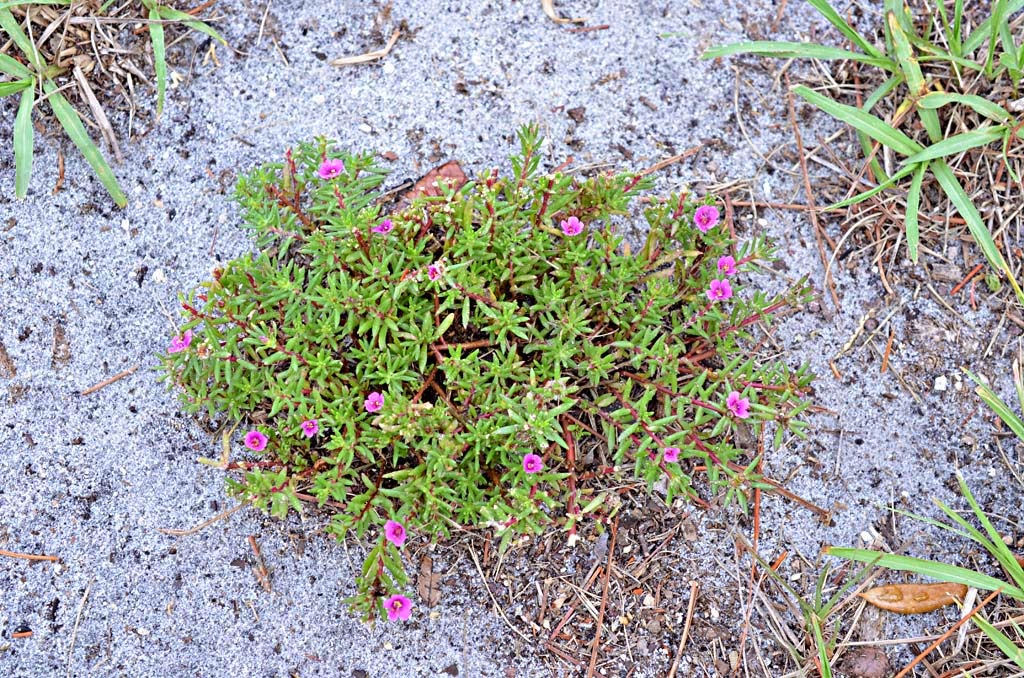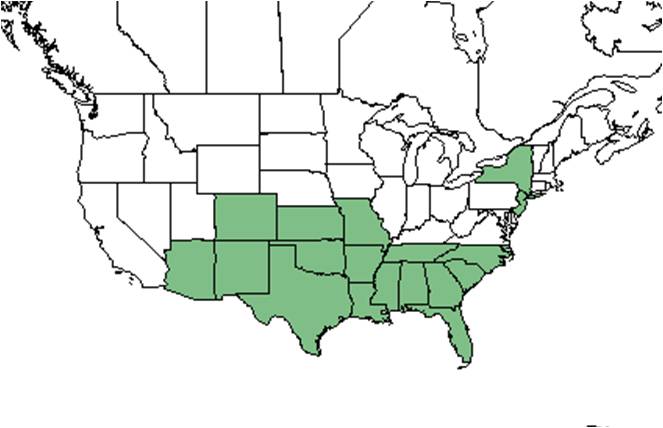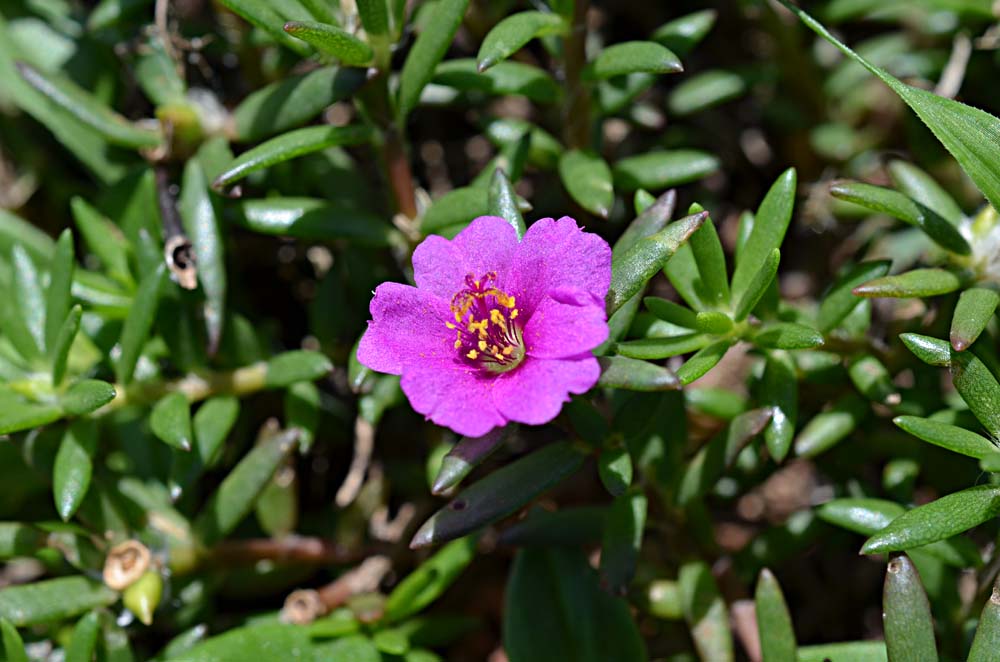Difference between revisions of "Portulaca pilosa"
KatieMccoy (talk | contribs) |
KatieMccoy (talk | contribs) |
||
| Line 35: | Line 35: | ||
===Phenology=== <!--Timing off flowering, fruiting, seed dispersal, and environmental triggers. Cite PanFlora website if appropriate: http://www.gilnelson.com/PanFlora/ --> | ===Phenology=== <!--Timing off flowering, fruiting, seed dispersal, and environmental triggers. Cite PanFlora website if appropriate: http://www.gilnelson.com/PanFlora/ --> | ||
| − | It flowers in July (FSU Herbarium). | + | It flowers in July (FSU Herbarium). In Mexico and the lower southeastern U.S., it is a tetraploid; in the southeast it is a diploid<ref name="matthews">(6) Matthews, J. F., D. W. Ketron, et al. (1992). "The reevaluation of Portulaca pilosa and P. mundula (Portulacaceae)." SIDA, Contribution to Botany</ref>. |
===Seed dispersal=== | ===Seed dispersal=== | ||
Revision as of 09:35, 1 March 2016
| Portulaca pilosa | |
|---|---|

| |
| Photo by Wayne Matchett, SpaceCoastWildflowers.com | |
| Scientific classification | |
| Kingdom: | Plantae |
| Division: | Magnoliophyta - Flowering plants |
| Class: | Magnoliopsida – Dicotyledons |
| Order: | Caryophyllales |
| Family: | Polygonaceae |
| Genus: | Portulaca |
| Species: | P. pilosa |
| Binomial name | |
| Portulaca pilosa L. | |

| |
| Natural range of Portulaca pilosa from USDA NRCS Plants Database. | |
Common names: Kiss-me-quick, Chisme, Pink Purslane
Contents
Taxonomic notes
Portulaca is the old Latin name for purslane, referring to the milky sap. Pilosa is Latin for hairy[1].
Description
A description of Portulaca pilosa is provided in The Flora of North America.
Portulaca pilosa has small terete leaves and small lavender-pink flowers, while P. amilis has larger succulent flat leaves and large orange-red flowers [2].
Distribution
Ecology
Habitat
In the Coastal Plain in Florida, P. pilosa occurs on river sandbars, along highways, lawns, disturbed wet sands of river bays, sandy roadways, and dry loamy sand in parking lots. Soil types include loamy sand, sand and fine gravel. Associated species include Portulaca amilis, Chamaesyce, and Solidago altissima[2].
Phenology
It flowers in July (FSU Herbarium). In Mexico and the lower southeastern U.S., it is a tetraploid; in the southeast it is a diploid[3].
Seed dispersal
Seed bank and germination
Fire ecology
Pollination
The following Hymenoptera families and species were observed visiting flowers of Portulaca pilosa at Archbold Biological Station (Deyrup 2015):
Halictidae: Lasioglossum tamiamensis
Use by animals
Diseases and parasites
Conservation and Management
Cultivation and restoration
Photo Gallery
Flowers of Portulaca pilosa Photo by Wayne Matchett, SpaceCoastWildflowers.com
References and notes
Deyrup, M.A. and N.D. 2015. Database of observations of Hymenoptera visitations to flowers of plants on Archbold Biological Station, Florida, USA.
Florida State University Robert K. Godfrey Herbarium database. URL: http://herbarium.bio.fsu.edu. Last accessed: November 2015. Collectors: Loran C. Anderson, Robert K. Godfrey, R.A. Norris. States and Counties: Florida: Calhoun, Franklin, Gadsden, Gulf, Jefferson, Liberty, Volusia, Wakulla, Washington. Compiled by Tall Timbers Research Station and Land Conservancy.
- ↑ [[1]]Some Magnetic Island. Accessed: March 1, 2016
- ↑ 2.0 2.1 Florida State University Robert K. Godfrey Herbarium database. URL: http://herbarium.bio.fsu.edu. Last accessed: November 2015. Collectors: Loran C. Anderson, Robert K. Godfrey, R.A. Norris. States and Counties: Florida: Calhoun, Franklin, Gadsden, Gulf, Jefferson, Liberty, Volusia, Wakulla, Washington. Compiled by Tall Timbers Research Station and Land Conservancy
- ↑ (6) Matthews, J. F., D. W. Ketron, et al. (1992). "The reevaluation of Portulaca pilosa and P. mundula (Portulacaceae)." SIDA, Contribution to Botany
